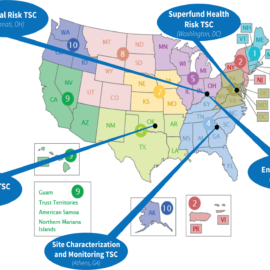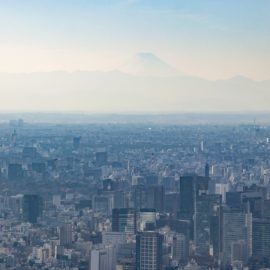
As I posted yesterday the EPA sent a 56 page letter to the LDEQ citing bias in regulating air pollution. This is the Advocates take on the same letter.
The state Departments of Environmental Quality and Health may be violating federal civil rights laws and regulations by allowing Black people to suffer disproportionate impacts from air pollution in Louisiana’s industrial corridor, including an increased risk of cancer, the federal Environmental Protection Agency said Wednesday. A 56-page “letter of concern” sent to the two agencies summarizes the EPA’s initial findings during an investigation into two civil-rights complaints filed in April by environmental and community groups in St. James and St. John the Baptist parishes. Earlier this year, EPA Administrator Michael Regan earlier this year pledged to investigate whether minority and low-income communities are disproportionately harmed by pollution, including in the region nicknamed “Cancer Alley.” The complaints focused on the state agencies’ efforts to deal with emissions of cancer-causing chloroprene from Denka Performance Elastomers in Reserve, and to assess increased emissions of cancer-causing ethylene oxide by the the proposed $9.4 billion Formosa Plastics manufacturing facility that would be located on the west bank of St. James Parish. ‘Adverse and disparate impact’
nola.com
This letter came after a judge thew our the states permits on the basis of environmental justice.
“EPA’s initial investigation raises concerns that the departments’ methods … may have an adverse and disparate impact on Black residents who live and/or attend school near Denka, who live near the proposed location for the Formosa facility, and those who live in the industrial corridor,” said the letter, first reported by The Lens. A state judge has thrown out Formosa’s permits, issued by the DEQ, on environmental justice grounds. The DEQ and the company have appealed that decision. In a statement Thursday, the EPA said both Louisiana departments have expressed a willingness to engage in an informal mediation process to resolve the complaints. “It is important to note that EPA has not concluded its investigation of these complaints and has not reached final conclusions of fact or law,” an EPA spokesperson said. Both the DEQ and the LDH noted that the letter did not include any legal action, and that both are cooperating in the investigation. “The Louisiana Department of Health is closely reviewing the extensive report and letter from the EPA. We take these concerns very seriously and are committed to health equity — which is why we are fully cooperating with the EPA’s investigation into Denka Performance Elastomer,” the LDH said in a statement.
The letter was not a “finding” with specific steps to take but rather a condemnation of the states actions in general.
The letter “was not a finding, but rather a step in the ongoing process,” said Gregory Langley, a spokesperson for DEQ. “LDEQ will continue to engage with EPA to resolve any issues and is committed to being protective of human health and the environment.” A spokesperson for Denka repeated the company’s past contentions that there is no evidence of increased levels of health impacts near the plant, and that the Louisiana Tumor Registry has found no elevated rates of cancer in St. John Parish or in census tracts bordering the facility, and questioned EPA’s contention that emissions of 0.2 micrograms per liter of chloroprene result in an increased cancer threat. Other credible research on chloroprene, including a best-practice model submitted to EPA, shows the 0.2 risk suggestion to be significantly overestimated, which is consistent with (Louisiana Tumor Registry) data,” said spokesman Jim Harris. Formosa officials also defended their proposed project, in a statement issued Thursday evening. “FG LA LLC’s project will be constructed and operated to meet all state and federal standards, which were established in order to protect the community and the environment,” said Janile Parks, the company’s director of community and government relations. “We believe the permits issued to FG by the Louisiana Department of Environmental Quality are sound and the agency properly performed its duty to protect the environment in the issuance of those permits.”
Opponents of the plan chimed in with comments as well, noting relief.
Robert Taylor, director of Concerned Citizens of St. John, which has long protested the Denka plant, said the letter was only a first step towards bringing polluters to heel. “My community has been failed time and time again by every level of government,” Taylor said. “As we wait for state and federal regulators to act, our neighbors are diagnosed with cancer at alarmingly high rates caused by toxic chemicals in the air we breathe. This is a true and dire health emergency and we are looking for urgent action by EPA … this must end.” “The state of Louisiana is not only failing to protect Black communities, but is also prioritizing their destruction,” said Anne Rolfes, director of the Louisiana Bucket Brigade, one of the organizations that filed the complaints. “Our officials take trips around the world promoting Louisiana to some of the worst polluters on the planet, and it’s usually Black communities that they are promoting as the bullseye for construction. Formosa is example No. 1.”
The EPA cited concerns on past and current actions by the state.
The EPA letter outlined a variety of concerns about actions by both state agencies. Around the Denka plant, including Fifth Ward Elementary School, it said residents and children were routinely exposed to chloroprene levels that would produce a risk of cancer far higher than EPA’s acceptable level — an estimated 100-in-1 million risk of developing chloroprene-linked cancers over a lifetime. EPA identified chloroprene as a “likely human carcinogen” in 2010. A 2014 EPA report found the area around the Denka plant had the greatest airborne cancer risk in the nation. After that report’s release, Denka installed equipment that substantially reduced its emissions. But the letter said residents continue to have unacceptably high levels of cancer risk, and it is disproportionately affecting Black residents. The letter described several health department “actions and inactions” that may have exacerbated that risk, including a failure to conduct studies of chloroprene exposure risk. And it singled out DEQ Secretary Chuck Carr Brown for what EPA said were inaccurate or misleading statements during public hearings. “During the few public meetings held to discuss Denka’s chloroprene emissions that LDEQ attended, when residents raised their concerns about Denka’s failure to meet the maximum annual average chloroprene concentration EPA recommended, LDEQ officials referred to those concerns as ‘fear mongering,'” the letter said. At one meeting, Brown called the maximum level of chloroprene deemed safe by EPA – 0.2 micrograms per cubic meter – ‘”just something EPA targeted as a goal,'” the letter said, adding that Brown “wanted the speaker to ‘detach yourself from that number.'”
There was also the states response on moving the children’s school.
The letter also criticized a June 2018 report issued by the health department that concluded moving children from the Fifth Ward Elementary School to another location would “not greatly decrease” their risk. The report failed to look at locations far enough from Denka to have considerably lower chloroprene concentrations. And it pointed out that Louisiana School of Public Health reports conducted for the health department in 2021 and 2022, funded by EPA, concluded there was a “likelihood of chronic exposure to low doses of chloroprene at levels [from the Denka facility][ which may have potential health impacts on vulnerable populations.” One report also found unacceptably high levels of cancer risk among Fifth Ward students, and also found detectable levels of chloroprene even when Denka was reportedly shut down. The letter also focused on a review of pollution data that indicates the highest cancer risks from air toxics “are almost exclusively within the Industrial Corridor,” which also has a high percentage of Black population. The letter said 14 census tracts, all in industrial parishes, had elevated cancer risks from air toxics. Focusing on the Formosa project in St. James, the letter pointed out that the existing risk levels in the parish and immediate area of the proposed facility are below EPA’s risk threshold now. But the letter questioned whether the DEQ’s review properly identified whether the adjacent Black neighborhood would see an increase in risk.
The EPA’s conclusion said it all.
“EPA is not stating in this letter that the projected (ethylene oxide) emissions from Formosa are per se adverse,” the letter said. “Given, however, the underlying environmental conditions and demographic characteristics of those most potentially impacted in the industrial corridor as a whole, and St. James in particular, LDEQ’s failure to do a proper analysis of the impacts, from a civil rights perspective, is concerning.”
You now have this story from the Lens, thanks to Pastor Manning, from the Washington Post, by my find, and now the Advocate on NOLA.com. Three different stories from three different perspectives.



